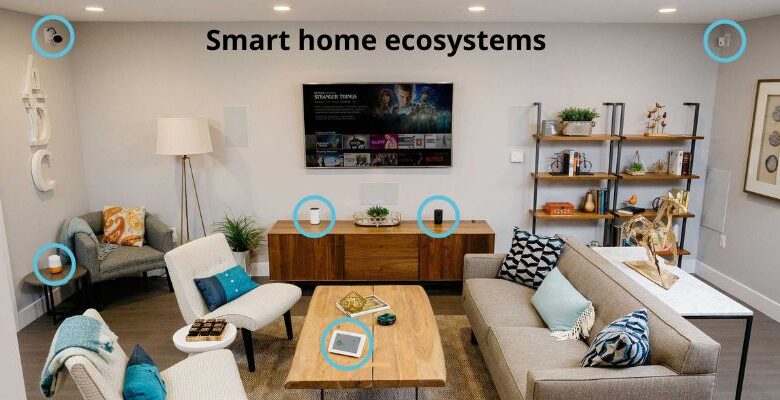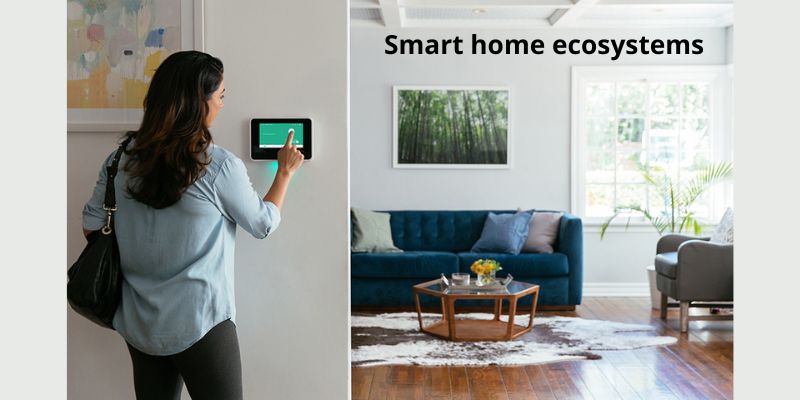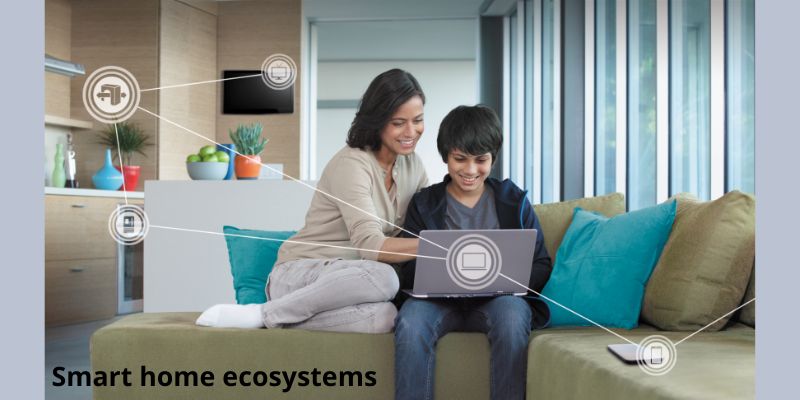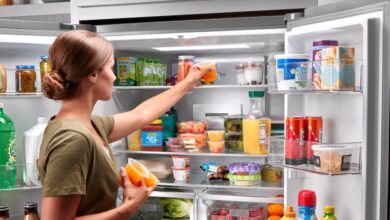Smart Home Ecosystems: Revolutionizing Modern Living

Creating a Smart home ecosystems is now simpler than ever, but selecting the best system to connect all of your gadgets and enable communication between them requires careful thought.
Prior to making any purchases, you must decide how you will connect all of this hardware, and as we approach the halfway point of 2023, you have a number of excellent options to choose from thanks to the maturity of the Smart home ecosystems market.
The top participants in the Smart home ecosystems market right now are Google, Amazon, Apple, and SmartThings. Thanks to their smart speakers, ecosystems, and voice assistants, these companies not only make it easy to handle your connected smart home devices, but also make home automation a breeze. fridgeblog.com will provide some of information for you in this post.
Post Contents
How to choose a smart home ecosystem

Starting with your chosen digital assistant is a great idea. The hub of an Smart home ecosystems could be anything from Apple’s Siri to Google Assistant to Amazon’s Alexa.
Check the compatibility of some of the Smart home ecosystems devices you’re thinking about buying as an alternative.
Your devices’ ability to work together will depend on these ecosystems, so you must consider both compatibility (the number of devices each program supports) and the breadth of capabilities available (such as automatic scheduling).
If you’re building a new system from scratch, moving platforms, or expanding an existing one, read on for our guide to the best Smart home ecosystems.
At the same time, you might want to look at our list of the top Smart home ecosystems hubs.
Top smart home ecosystems

Amazon Alexa
Since its debut on the initial Amazon Echo Smart home ecosystems speaker in 2014, Amazon’s Alexa digital assistant has expanded to a wide range of speakers and other gadgets. The best Alexa experience may be had with an Amazon Echo speaker, but Alexa is now available on a variety of devices that don’t bear the Amazon logo.
In essence, there are two types of Alexa devices: those that only work with Alexa, usually meaning they can be controlled by voice from another Alexa device, and Smart home ecosystems speakers and other devices that already have Alexa. Look for products with the ‘Works with Amazon Alexa’ badge since it makes a significant distinction.
You can easily integrate Alexa into your house to give you voice access to all of your Smart home ecosystems functions.
Keep in mind that the Alexa virtual assistant also makes use of “Alexa Skills,” the name given to specially developed voice-activated apps. For instance, the CNN skill reads out the most recent headlines, the TuneIn skill plays your preferred radio station, and the Spotify skill enables you to choose your favorite songs and playlists.
In terms of the sheer number of abilities it offers, Amazon surpasses the other digital assistants, and that number is continually increasing.
To control everything else, you will need at least one device that has Alexa integrated in. It’s also important to note that some Alexa speakers, like the 4th generation Echo, come equipped with a Zigbee hub, negating the need for hubs made by Philips or other companies (at least for basic functionality).
Apple HomeKit

The premise behind HomeKit, a software framework built in into Apple products, is straightforward: rather than having a variety of smart home apps on your smartphone that may or may not sync with one another, HomeKit ties them all together and puts control front and center on your gadgets.
You can manage anything using the Home app on your iOS, iPadOS, or macOS device, and as you might expect, Siri is supported. You can either open the Home app or just ask Siri to turn off a smart light or change the temperature of a smart thermostat.
Apple HomeKit is actually divided into two pieces. Devices must adhere to the HomeKit protocol, which is a background software technology; it is extremely safe because Apple takes encryption very seriously. The Home app is another component of HomeKit that you may access on your iPhone, iPad, or Mac.
Google Assistant (Google Home)
Similar to Amazon’s market leader, Google’s Alexa rival launched with the Google Home speakers in 2017 and is now available outside of in-house products.
A few of the Google-produced speakers with Assistant built-in that are currently on the market are the classic Google Home, Nest Mini (previously the Home Mini), Google Home Max (which was formally discontinued in late 2020), Google Nest Hub (with a 7-inch display), Google Nest Hub Max, and the Nest Audio.
Additionally, products from independent manufacturers including JBL, LG, Sony, Lenovo, Panasonic, and Sonos now feature Assistant capabilities in their speakers and displays.
Similar to Alexa, Google Assistant devices can be divided into two groups: those that can be spoken to and already feature the Assistant (such as smartphones and Chromebooks) and those that can be controlled by it.
Conclusion: So above is the Smart Home Ecosystems: Revolutionizing Modern Living article. Hopefully with this article you can help you in life, always follow and read our good articles on the website: Refrigerator- side by side Refrigerator -Appliances Kitchen Review Blog



